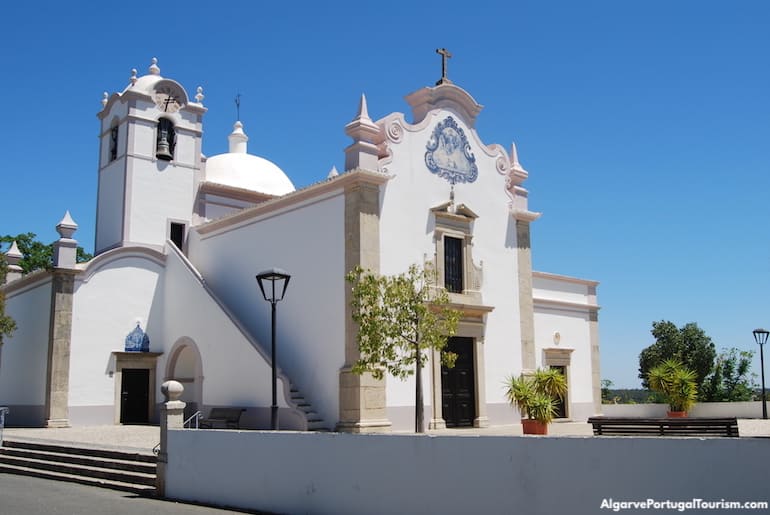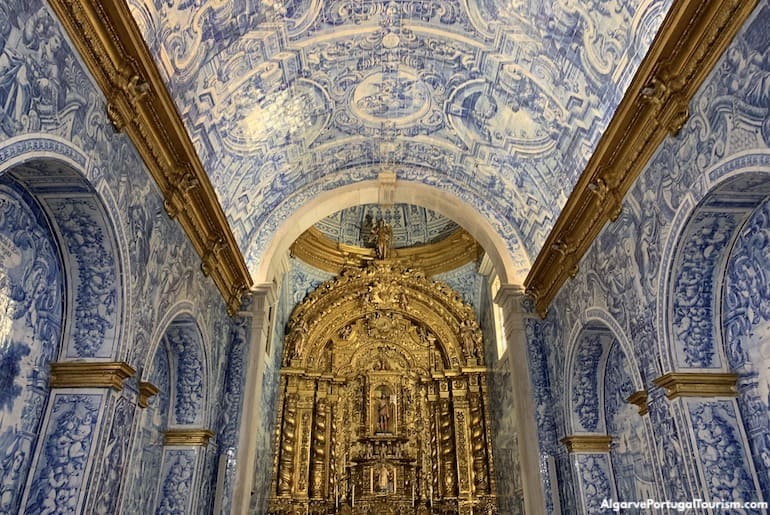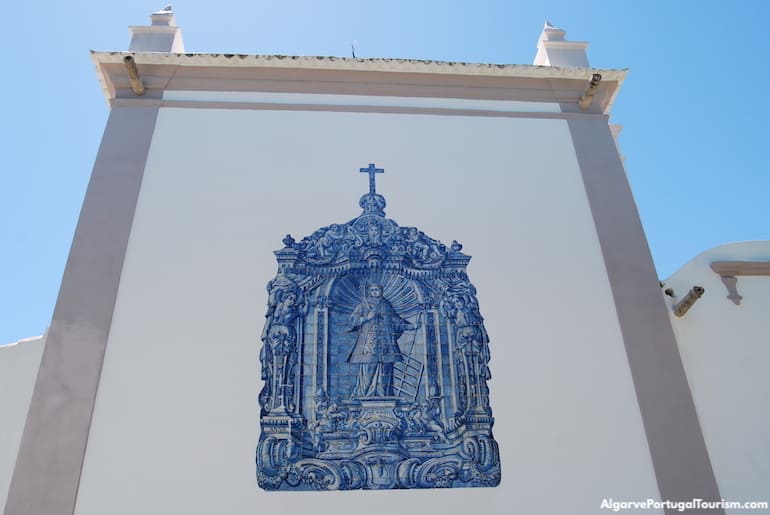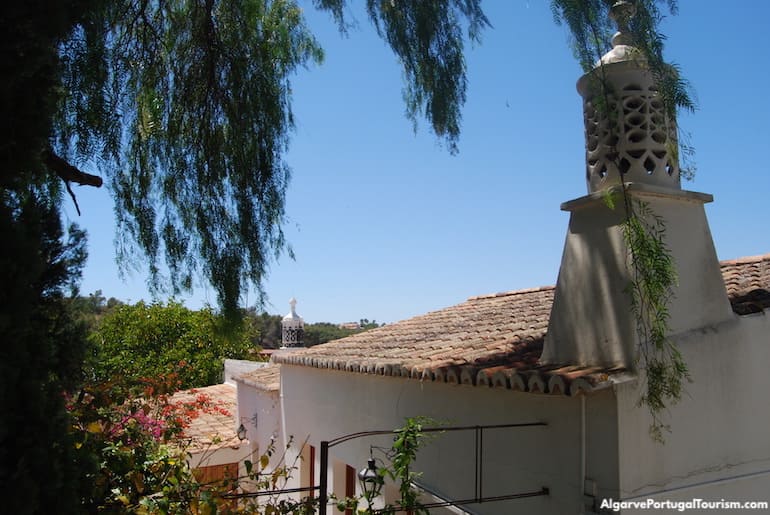
The town of Almancil is very small and not located on the coast but is a major tourist destination for one single reason -- a church that’s one of Algarve’s main cultural treasures. The Igreja de São Lourenço (“Church of Saint Lawrence”) is worth a detour when traveling in the Faro or Loulé regions or when staying in the luxury resort towns of Vale do Lobo and Quinta do Lago. Built in 1730, it miraculously survived the Great Earthquake of 1755, which destroyed practically all of Algarve (it is said that only five tiles fell from the ceiling). While it looks like an ordinary Portuguese church from outside, its interior is an outstanding example of European baroque and tile art, and considered a masterpiece of Portuguese art.

As you enter, it feels like you’re stepping inside a gigantic piece of porcelain or jewelry box, with blue-and-white tile panels and golden carvings decorating every inch, from floor to ceiling and even the small cupola. This tile-covered cupola is unique in the world and was designed by Policarpo de Oliveira Bernardes, one of the masters of tile painting. The same artist was responsible for most of the panels on the walls, which illustrate scenes from the life of St. Lawrence. On the wall with the main doorway are allegories of virtues like hope, faith, and charity. They date from 1730 and were brought from Lisbon. A small panel from the same period, depicting St. Lawrence, can also be seen in the exterior, decorating the back of the church. Yet another one, dating from much later, can be seen on the façade.
Although all of the attention goes to the tiles, the altarpiece is also noteworthy. Added in 1735, it’s a marvelous example of baroque gilding, attributed to master Manuel Martins.

While other churches in Portugal at the time were already exuberantly ornamented with tile panels and gilded wood, here the perspective created by the trompe-l'œil technique and designs on the tiles serve as architectural details in an otherwise simple construction. This was replicated in other churches around the country, creating the very original aesthetics of Portuguese baroque. While no other buildings were completely covered with tiles up to the ceiling, there are countless fine examples combining blue-and-while tile panels on the walls and golden carvings on the chancels. On a tour of Portugal, stop at the Tile Museum in Lisbon, which is housed in a convent with a similar church, and at the churches of São Victor in Braga, Misericórdia in Viana do Castelo, Lóios in Évora, and Convento dos Cardaes in Lisbon.

Although most people visit Algarve for the beaches, caves and stunning landscape of cliffs and rock formations, this extraordinary church should not be missed by those who enjoy art and architecture. The only disappointment will be the fact that photography is not allowed inside, and this rule is strictly enforced by the guards who watch visitors like a hawk.
Besides the church there’s nothing else to see in town. For other cultural attractions nearby, head to Faro. Its cathedral and Carmo Church also feature rich baroque interiors.
Opening hours are from 10am to 1pm and then from 3pm to 6pm. It’s closed on Monday mornings and on Sundays all day (it only opens for Mass, at 9am, and tourist visits are not allowed).
How to Get to Almancil
The church is about 5 minutes from the center of Almancil, which can be reached from Faro in about 15 minutes, from Quinta do Lago in less than 15, Vale do Lobo and Quarteira in about 10, and Vilamoura in 20. You’ll need a car or to take an Uber or taxi, since it’s not easy to reach by public transportation. There’s a train to Almancil, which from Faro takes just 12 minutes, but the station is over 3 kilometers (close to 2 miles) from the church, and walking from there would take about 40 minutes. There’s parking on the streets around the monument.